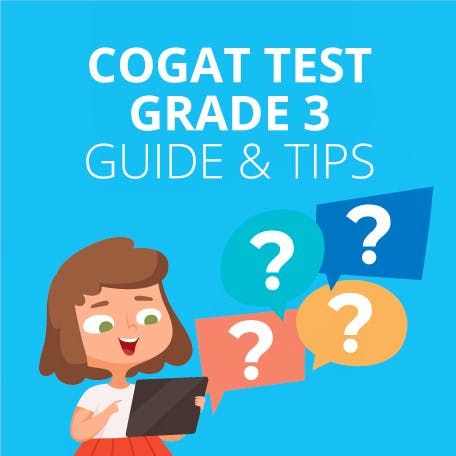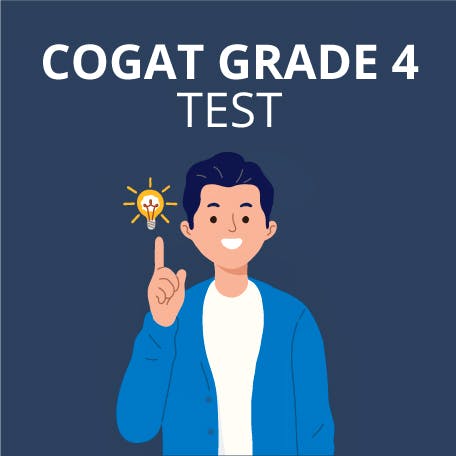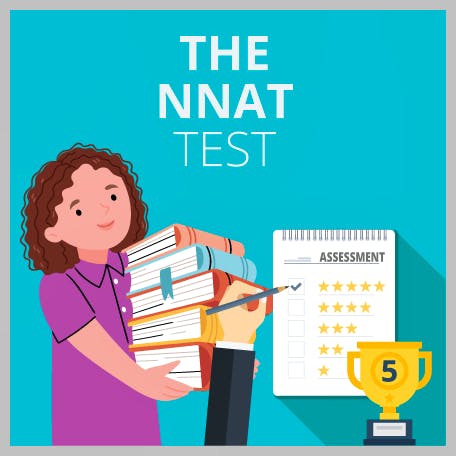A Guide to the CogAT Test 6th Grade: with Examples & Tips
Updated June 4, 2024
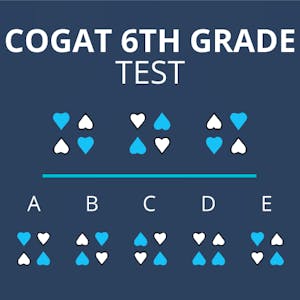

Many schools use the CogAT Test 6th Grade to assess the non-verbal, verbal and quantitative abilities of sixth-grade students.
The Level 12 CogAT test is a useful tool for checking a student’s individual academic strengths and weaknesses. It can also be used as a screening assessment for entry into the gifted and talented program.
What Is the CogAT Test 6th Grade?
'CogAT' is an acronym for Cognitive Aptitude Test.
CogAT tests are usually administered at school by a teacher or instructor, although some schools employ test proctors and specialists to administer the tests.
This guide is designed to support you and your child through the CogAT Test 6th Grade. You can use it to find out what to expect from the test and tips on how to prepare for it.
We have also included information on the purpose of the test and how to interpret your child’s results.
When Is the CogAT Test 6th Grade Used?
The CoGAT (Cognitive Abilities Test™) brand was developed by Riverside Publishing, which forms part of Houghton Mifflin Harcourt.
CogAT tests are multiple-choice aptitude tests. They are used to assess reasoning skills and problem-solving abilities in the following areas:
- Non-verbal
- Verbal
- Quantitative
Students of all age groups may be asked to sit a CogAT test from kindergarten up to 12th grade.
There are 18 different levels of the test, which correspond with the different academic year groups.
High levels of ability in these key areas have been linked to academic success.
If your child’s teacher has identified them as being potentially gifted and talented, they may be required to sit the CogAT Test 6th Grade before they can join the school’s gifted program.
CogAT tests are used all over the United States to highlight exceptionally gifted or talented students.
The CogAT Test 6th Grade is also referred to as the CogAT Level 12.
As with all of the CogAT tests, the test level corresponds with the age of the pupil taking the test, so the CogAT Test 6th Grade is usually taken by 12-year-olds.
Sometimes, a school may choose to administer the test for younger children considered to be highly gifted; however, this is unusual.
Unlike some of the lower level CogAT tests, there are fewer picture-based questions in the CogAT Test 6th Grade.
The non-verbal battery still contains some images, but the quantitative and non-verbal batteries do not.
The CogAT Level 12 test is made up of 176 questions.
Some schools require pupils to take each test battery separately, whereas others will expect students to sit all of the batteries on the same day.
Check with your child’s school to find out what system they use for administering the test.
CogAT Test Grade 6 Format
If your child is required to sit all of the test batteries on the same day, the total time allowed for the test is 90 minutes.
For each battery, there are three separate subtests, and students are allowed approximately 10 minutes to work through each one.
In most cases, children sit the CogAT Test in 6th Grade at school.
However, if your child’s school does not administer the test, they are homeschooled or attend a private educational institution, and individual testing can be arranged.
Here is a breakdown of the test batteries and subtests for the CogAT Test 6th Grade.
Test Battery – Subtests
Non-Verbal Battery
Used to assess abstract reasoning.
Questions are based on geometric shapes and spatial relationships.
Paper Folding
Consists of 16 questions.
Pupils must study a series of images, which show a sheet of paper that has been folded and hole punched.
Next, they must decide what the paper would look like if it was unfolded and choose the correct answer from a set of multiple-choice options.
Figure Classification
Consists of 22 questions.
Pupils are asked to analyze a series of figures and shapes to identify a common theme. They will be shown three shapes that are alike in some way.
Afterward, they must choose the fourth shape in the series from a set of multiple-choice options.
Figure Matrices
Consists of 22 questions.
Pupils must identify rules and relationships when studying abstract shapes in a 2x2 matrix.
Once they have identified the relationship between the shapes in boxes one and two, they must use this knowledge to choose the correct shape for box four.
Verbal Battery
Used to assess vocabulary and verbal comprehension.
Verbal Classification
Consists of 20 questions.
Students must study three words that will share a common link.
They will be shown five other words and must choose the one that shares the same common link as the first three words.
Sentence Completion
Consists of 20 questions.
Pupils must read a sentence with a missing word. They must choose the correct word from a set of multiple-choice options.
Verbal Analogies
Consists of 24 questions.
Pupils must identify relationships between words.
They will need to view a ‘word pairing’ where a relationship exists. For example, high is too low, and they will need to choose the correct pairing for a new word by applying the same relationship.
Quantitative Battery
Used to assess reasoning skills and problem-solving abilities in relation to basic arithmetic and numbers.
Number Analogies
Consists of 18 questions.
Students must identify relationships between numbers.
They will need to view a ‘number pairing’ where a relationship exists, then identify the correct pairing for a new number by applying the same relationship.
Number Puzzles
Consists of 16 questions.
This subtest includes a set of grade-level appropriate mathematical equations, including addition, subtraction, division and multiplication.
Pupils will also need to apply their knowledge of the order of operations.
Number Series
Consists of 18 questions.
Students must study a sequence of numbers and identify the underlying logic.
Afterward, they must use logical reasoning skills to apply this logic to choose the correct number in the series from a multiple-choice selection.
CogAT Practice Test Grade 6 Questions
Verbal Battery – Verbal Analogies Sample Question – CoGAT Practice Test 6th Grade
Paper: Book
Consider the relationship between the word pairing above. How does the second word relate to the first?
Once you have identified the relationship, decide which of the words below relates to the word 'leaf' in the same way.
a) Nature
b) Tree
c) Green
d) Material
Row 1: Kitten, Puppy, Chick
Row 2: Duck, Piglet, Rabbit, Hamster, Rat
Consider the words in Row 1. What makes them similar?
Which word from Row 2 fits best with the words in Row 1?
Which of the following images is correct if you unfold the paper after punching the hole?
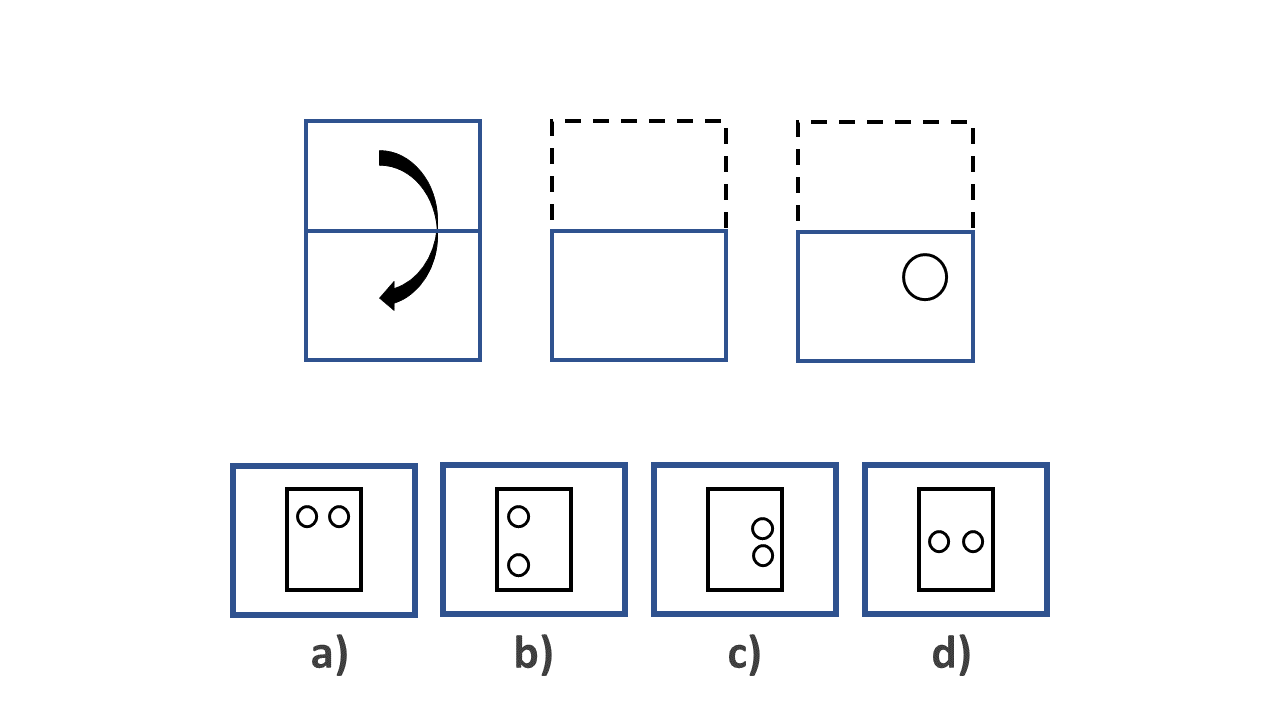
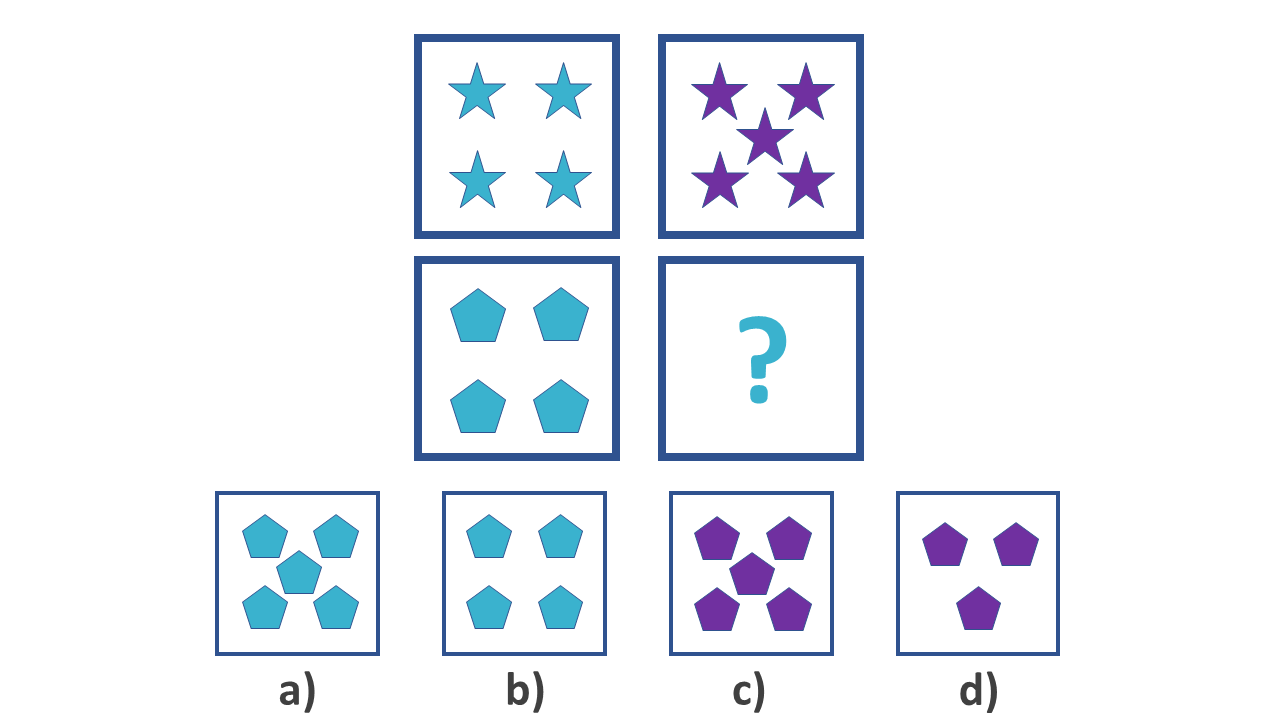
Which of the options (a to d) fits best into the bottom-right box in the grid (marked with a '?')?

If you want 12-month access to all the practice resources for this test, our partner TestPrep-Online.com offers a Family Membership.
Family Membership gives you access to all the TestPrep-Online resources for the next 12 months. You will also get two separate accounts, which can be very helpful if you have two children preparing for their tests.
Grade 6 Test Preparation Tips
Step 1. Practice with Online Tests
Your child may be unfamiliar with taking aptitude tests, so it is important to show them what to expect.
Helping them to work through some CogAT 6th grade test prep questions is the best way to achieve this.
Answering CogAT 6th grade test questions will also help to boost their confidence on the day of the test.
When taking practice tests, you should encourage your child to read each question carefully before choosing an answer.
Step 2. Become Familiar with Explaining Answers
Once your child has answered a question, chat with them about how they reached this conclusion. This can help to boost their understanding of how the test works and improve their problem-solving abilities.
Step 3. Review Key Test Concepts Through Play-Based Activities
Each child will have their own individual learning preferences. For example, they might learn best through reading, writing or watching videos.
Try to offer a varied program of preparation activities. This might include educational games, jigsaw puzzles and reading a variety of different materials.
Step 4. Allow Extra Time for Weak Spots
If your child finds one part of the test particularly difficult, offer additional support in this area.
Try to make it fun where possible; you can find a range of online games and puzzles to help your child prepare for the CogAT Grade 6.
Step 5. Build a Study Schedule for CogAT Test Prep Grade 6
Set up a regular preparation routine for your child. Ask them to get involved with creating it, using color coding or symbols to make it more user-friendly.
Print a copy of the agreed schedule and encourage your child to stick to it.
Step 6. Rest and Eat Well Before the Test
Whether your child is taking science tests for 6th graders or sitting the CogAT Grade 6, adequate rest is vital.
Try to limit extra-curricular activities in the days leading up to the assessment and encourage your child to take an early night the evening before.
On the day of the test, make sure you offer them a nutritious breakfast and plenty of water so they are well-hydrated.
The CogAT test for 6th Grade is an assessment used for gifted student programs.
The test is made up of a series of nonverbal, verbal and quantitative ability questions. It is a popular choice for schools that wish to establish pupils’ strengths and weaknesses.
The CogAT test (6th Grade) is designed to challenge 12-year-old pupils. It is likely that your child will find some questions more difficult than others, depending on their individual strengths and weaknesses.
Adequate preparation will give your child the best chance of achieving a good score on the test.
You can find a full preparation pack for the CogAT test (6th Grade) on the TestPrep-Online website.
Yes, the CogAT test (6th Grade) is timed. If your child is taking all three test batteries at the same time, they will have 90 minutes to work through all of the questions.
The test contains a total of 176 questions.
No, you cannot fail the CogAT test (6th Grade). However, your child’s school district will determine the score required for them to be eligible for the gifted and talented program.
You can find a range of preparation resources (including sample questions) for the CogAT test (6th Grade) on the TestPrep-Online website.
The CogAT test (6th Grade) is designed to assess non-verbal, verbal and quantitative abilities. Many schools use it to identify pupils suitable for the gifted and talented program. It is a useful tool for identifying academic strengths and weaknesses.
The CogAT test (6th Grade) is not mandatory for all 6th Grade students. However, if your child wants to gain entry to their school’s gifted and talented program, their school may deem it mandatory for them to sit the test.
No, it is unlikely that your child will be permitted to retake the CogAT test (6th Grade). The assessment is designed to assess cognitive ability, so repeating the test and answering the same questions will not offer accurate results.
The CogAT test (6th Grade) is split into three test batteries: non-verbal, verbal and quantitative. Questions on the test include verbal analogies, sentence composition, numerical analogies, puzzles and paper-folding exercises.
You can find a complete guide for the CogAt test (6th Grade) on the TestPrepOnline website. This includes full-length practice tests, topic-specific practice drills and sample score reports.
Final Thoughts
The CogAT Test 6th Grade is used to assess a child’s capacity for problem-solving, logical reasoning and overall learning.
As these cognitive skills are proven to contribute to academic success, many schools use the CogAT tests in the selection process for gifted and talented programs.
If your child is sitting the CogAT Test 6th Grade, there are several things you can do to help them prepare.
You can find a range of useful practice test questions and mock assessment papers online.
Other useful preparation methods include educational games, puzzles and reading a variety of books and newspapers.
Visit the TestPrepOnline website to find CogAT Grade 6 sample questions Grade 6.











